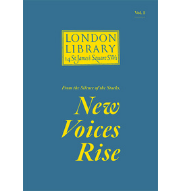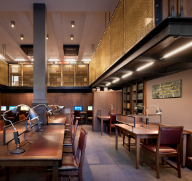You are viewing your 1 free article this month. Login to read more articles.
London Library finds Bram Stoker's source books
The London Library says it has located a number of the actual books used by Bram Stoker in researching his novel Dracula.
Stoker's own notebooks list a wide range of the author's sources for Dracula, including hundreds of references to individual lines and phrases in books that he considered relevant. A recent trawl of the London Library's bookshelves has revealed that the Library has original copies of 26 of these books, and many of them carry detailed markings that closely match Stoker's notebook references - whether crosses and underlinings against relevant paragraphs, or page turnings on key pages, or other notations - and which the library believes were made by Stoker himself.
The library has academic support for its claims, with Nick Groom, professor of English Literature at the university of Exeter, confirming that having examined the books he has "no doubt" that Stoker used these exact volumes.
Stoker was a member of the historical members' lending library, based in London's St James' Square, for seven years during the relevant period of his work - from 1890 up until 1897, the date of Dracula's publication. Some of the most heavily marked books include Sabine Baring-Gould’s Book of Were-Wolves, and Thomas Browne’s Necromancy - Divination of the Dead, while the range includes A F Crosse’s Round About the Carpathians and Charles’ Boner’s Transylvania.
Philip Spedding, the library’s development director, and the man who uncovered the books' annotations, commented: “Bram Stoker was a member of The London Library but until now we have had no indication whether or how he used our collection. Today’s discovery changes that and we can establish beyond reasonable doubt that numerous books still on our shelves are the very copies that he was using to help write and research his masterpiece.”
London Library director Philip Marshall noted: “Bram Stoker followed the same path that many writers have pursued before and since - using the Library to transition into a serious writing career, and drawing heavily on the Library’s collection to seek inspiration and ideas for his masterpiece. With the Library’s incredible list of members past and present, some of the most famous characters in fiction must have been developed here – with today’s discovery we can feel sure that Dracula was one of them. We hope that many aspiring writers will follow Bram Stoker’s example and use The London Library as a source of inspiration and support when creating their own masterpieces.”


















